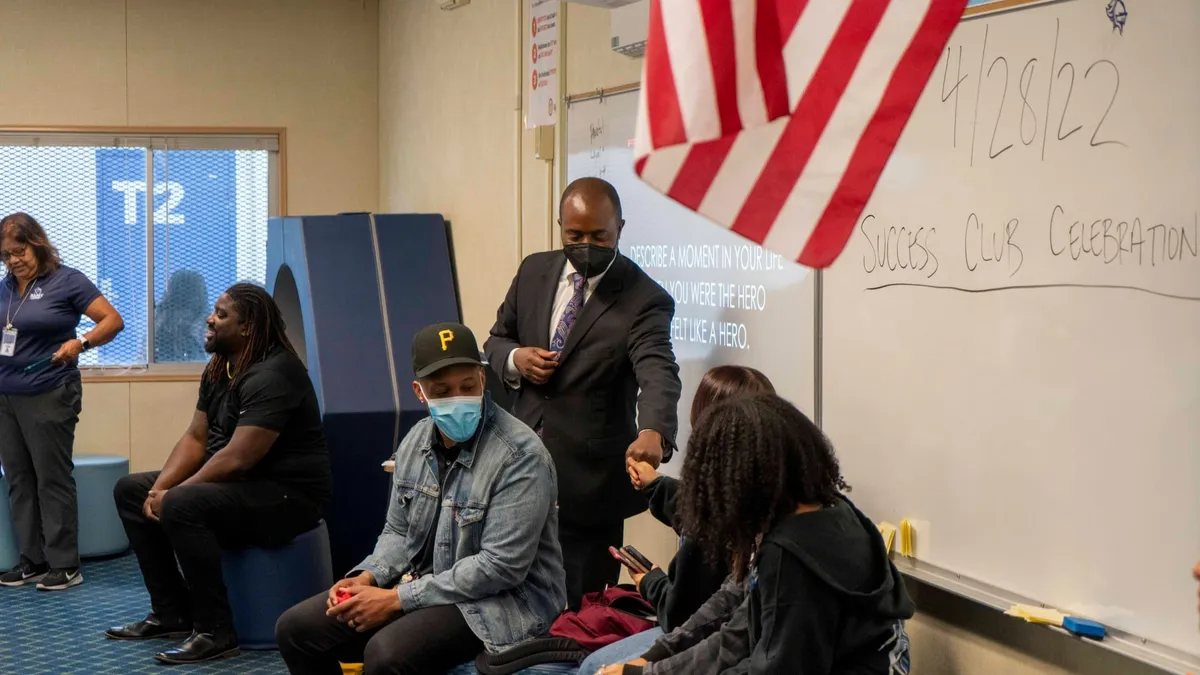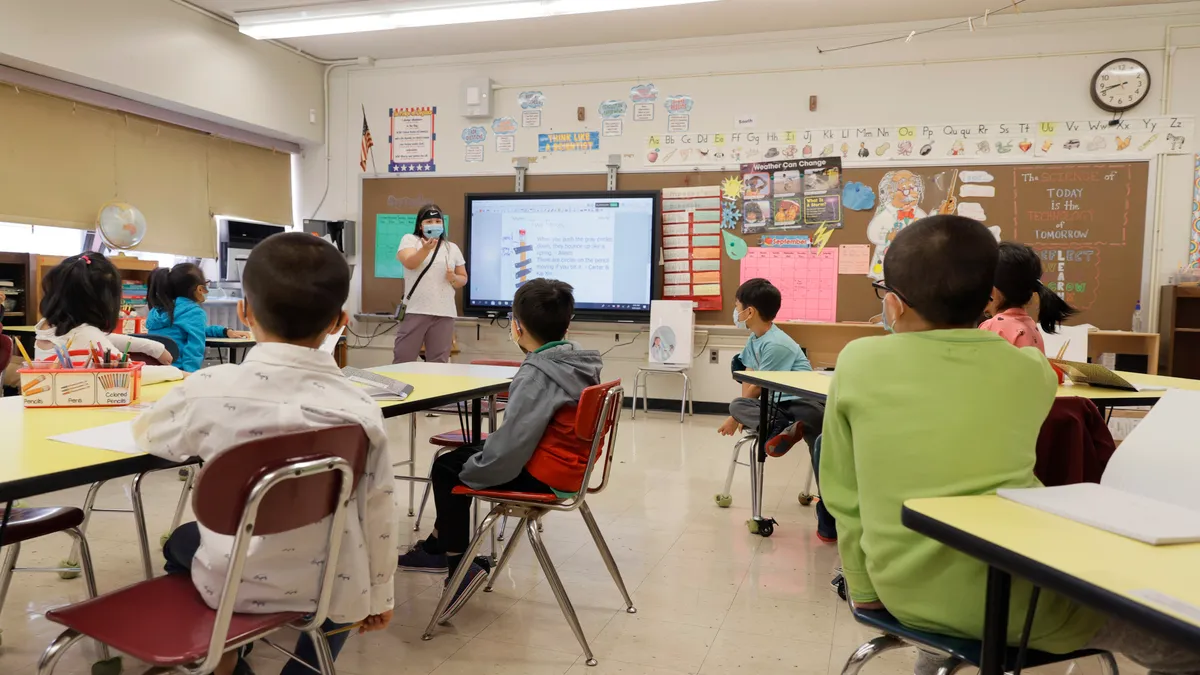With districts continuing to report shortages of teachers in multiple subject areas, a pair of new reports delves into the methods that schools are using to fill teaching positions, suggesting that smarter recruitment strategies and less reliance on whether the candidate is “likable” could not only help schools find teachers, but also keep them.
According to first report, from the Frontline Research and Learning Institute, school and district leaders are more likely to hire job candidates through referrals than they are applicants who respond to job board postings. “A Leak in the Pipeline: How Hiring Bias Might Be Compounding the Teacher Shortage,” finds that job board postings generate about 40% of the applications from candidates with active licenses and that schools hire about 12% of those educators.
Only about 15% of applications come through referrals — or by word of mouth — but among that group, 30% are hired, which the authors say suggests hiring managers might be making decisions based on who seems “likable.” This approach, however, doesn’t mean the person is a good fit for the school, they say.
“In short: in school district hiring, it’s (almost) all about who you know,” they write. “But if hiring who you know is a best practice, data should reveal that those teachers are likely to stick around in their roles longer and are likely to grow and quickly maximize student outcomes.”
Their report also includes data, drawn from 800 districts in 45 states, showing that one-third of those hired leave for other teaching positions within the first three years, and another 20% transfer within the first six years of teaching. This lack of staff stability especially affects students in high-poverty schools and costs school districts roughly $2.2 billion per year, according to a 2014 study by University of Pennsylvania education and sociology professor Richard Ingersoll.
Rigorous screening and hiring processes, including asking candidates to demonstrate their content knowledge and teaching skills, can lead to better matches between candidates and schools, the report says. “Districts should not completely eliminate the human element of the hiring process, but they should aim to reduce subjectivity at every stage of it,” the authors write.
The report also includes a series of steps districts can take to determine whether they are biased in their hiring procedures, such as asking where and when jobs are posted, examining the demographics of those who are asked to move to the next step, and identifying when bias might enter the picture.
Studying successful models
Meanwhile, a second new report from the California County Superintendents Educational Services Association examines the successful teacher recruitment practices used in the California districts that fill 90% or more of their teaching positions each year.
Working with realtors and housing agencies to help prospective teachers find affordable housing and predicting vacancies in order to fill them early are two of the methods highlighted in “Teacher Recruitment in California: An Analysis of Effective Strategies.”
The researchers note that methods districts traditionally used to attract teachers are less likely to be enticing to the Millennial generation. “[Local Education Agencies] that continue to market their pay scales as a primary strategy to recruit Millennials are overlooking the reality that flexibility in compensation and advancement is more important than the amount of pay Millennials are initially offered,” they write.
Using active recruitment strategies, such as having relationships with university teaching programs and having a “talent acquisition” approach toward identifying and recruiting teachers for specific needs, were also listed as more effective strategies. The methods featured in the report also include using more personalized communication methods, such as texts and letters of invitation, instead of “broad-channel” methods, such as posting positions on websites or university bulletin boards.
The authors of the report stress that just because a recruitment strategy — or lure — works in one district doesn’t mean it will be an effective approach in another district. Even so, the report provides a different perspective on the teacher shortage issue — that of school and district leaders who are avoiding vacancies by using strategies that appeal to those more interested in creating their own career path and who want a more flexible and creative working environment.
The report offers many specific recommendations and suggestions, including informing a district’s internal staff of hiring needs, encouraging student teacher placements, setting up recruitment booths at content specific conferences — such as those for math and science teachers — and making the hiring process paperless.
Streamlining the system
Going paperless is what happened at the Dr. Richard Izquierdo Health and Science Charter School in the Bronx, NY, where teacher leader Leah Weiser became interested in improving the recruitment and hiring system after participating in some phone interviews.
“I became aware of the fact that our recruitment process was definitely bulky and could be streamlined,” says Weiser, who teaches math.
The 800-student school was growing from a 6th-10th grade campus to a 6th-12th and needed teachers, but they were only advertising positions on the school’s website and on one national job site. The principal and other teachers conducting phone interviews were still passing around paper resumes, and at each stage of the process — from identifying the candidate to bringing them in for a demonstration lesson — there were delays, she says, adding that a lot of applicants were also coming through word of mouth.
Weiser volunteered to look for another way and recommended the school try Lever, a digital platform that standardizes the screening process and allows those involved in the process to share feedback.
“It feels like we are choosing from a larger pool and able to act on candidates that we are really excited about more quickly,” Weiser says, adding that ideally, candidates are hired in the spring so they can work during summer school and “get to know our students and procedures.”
The system also provides data on how the applicant learned about the position. “In the past, that was anecdotal,” she says. “Now we can be more strategic about analyzing where our candidates are coming from.”



















